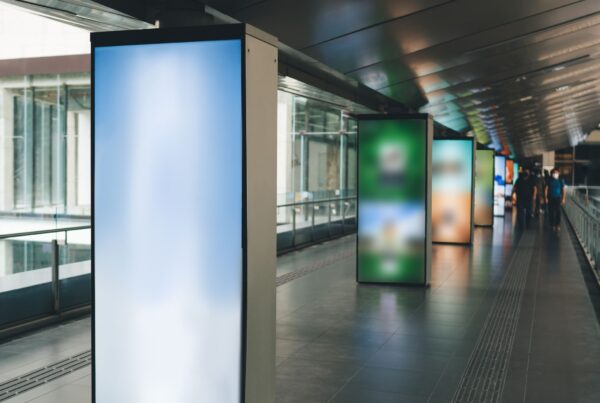As we move through 2025, the evolution of digital signage is accelerating. For businesses in Singapore, the integration of interactive displays, artificial intelligence (AI), touchless solutions, and sustainable hardware are no longer “nice‑to‑haves” but strategic imperatives. These trends are reshaping how brands engage customers, operate efficiently and align with national goals around technology and sustainability.
Interactive Displays, AI Integration and Touchless Solutions
One of the most significant shifts in the digital signage landscape this year is the move toward interactive and context‑aware screens. Digital signage is no longer just “playing” content—it is responding to the audience, environment and business context in real time. According to a Singapore‑focused article on 2025 digital signage trends, AI‑powered displays are becoming standard, enabling real‑time adaptation of content based on weather, traffic, foot traffic or demographics.
Touchless interaction is another major component. Driven by heightened hygiene awareness and preference for contactless engagement, digital signage installations are increasingly using gesture recognition, voice commands, mobile phone integrations and QR‑triggered experiences. One industry insight suggests that demand for touchless technology is increasing at about 30 % annually.
Further, as part of the smart signage ecosystem, displays are being embedded with IoT sensors, audience‑analytics tools and edge computing to adjust what’s shown dynamically. For example, a retail screen in Singapore could switch from a promotion for iced drinks during midday heat to a cosy warm‑beverage pitch when the weather changes, powered by real‑time data.
Sustainability and Energy Efficiency in Commercial Screens
A parallel trend that is becoming equally important is the push for sustainability and energy efficiency in commercial display hardware. Businesses and regulatory frameworks in Singapore are placing greater emphasis on green technology, and digital signage is part of that movement. According to regional analysis, energy‑efficient digital signage solutions—such as low‑power LED panels, ambient‑light sensors that adjust brightness automatically, and solar‑powered outdoor displays—are expected to see a 40 % increase in demand in 2025.
For Singaporean enterprises, this means choosing displays rated for long service life, energy‑saving modes and lower total cost of ownership. It also means aligning with broader sustainable goals, such as reducing operational power consumption and demonstrating corporate social responsibility in visible ways. As one local overview puts it, modern smart signage in Singapore uses LED and OLED technology with automatic brightness control to conserve power and reduce visual fatigue.
What Singapore Businesses Should Adopt First
Given these trends, what should businesses in Singapore prioritise when implementing or upgrading their digital signage strategy?
First, focus on interactivity in high‑foot traffic zones. Shopping malls, F&B environments, hotel lobbies and transport hubs are especially suited for interactive or touchless displays. Deploying gesture or mobile‑initiated features not only engages customers but also caters to hygiene and convenience expectations.
Second, integrate AI‑driven content and analytics. Use digital signage networks that allow content scheduling, automated adaptations based on time of day or audience behaviour, and analytics to measure dwell time, engagement or conversion. This ensures your investment delivers value beyond mere screen presence.
Third, select energy‑efficient and durable hardware. Choose displays with high brightness (for outdoor or glass‑front settings), automatic ambient light adjustment, and long operational lifespans. This reduces maintenance costs and aligns with sustainability objectives.
Fourth, pilot with scalable systems. Start with modular installations—perhaps interactive kiosks or smart displays in key locations—and as you gather data and refine strategy, scale across outlets. This measured approach allows for learning, performance optimisation and lower risk.
Fifth, create locally relevant and multilingual content. Singapore’s multicultural environment means your content should resonate with diverse language groups and contexts, and adjust dynamically (for example switching languages or offers based on audience or time). Smart signage with AI or CMS support makes this feasible.
In 2025, digital signage is no longer a passive medium—it is becoming smart, interactive, data‑driven and sustainable. For businesses in Singapore keen to stay ahead, investing in interactive displays, AI integration, touchless experiences and energy‑efficient hardware is a strategic move. By starting with high‑impact locations, using pilot deployments, leveraging analytics and choosing the right hardware, brands can transform their screens into powerful engagement platforms.



